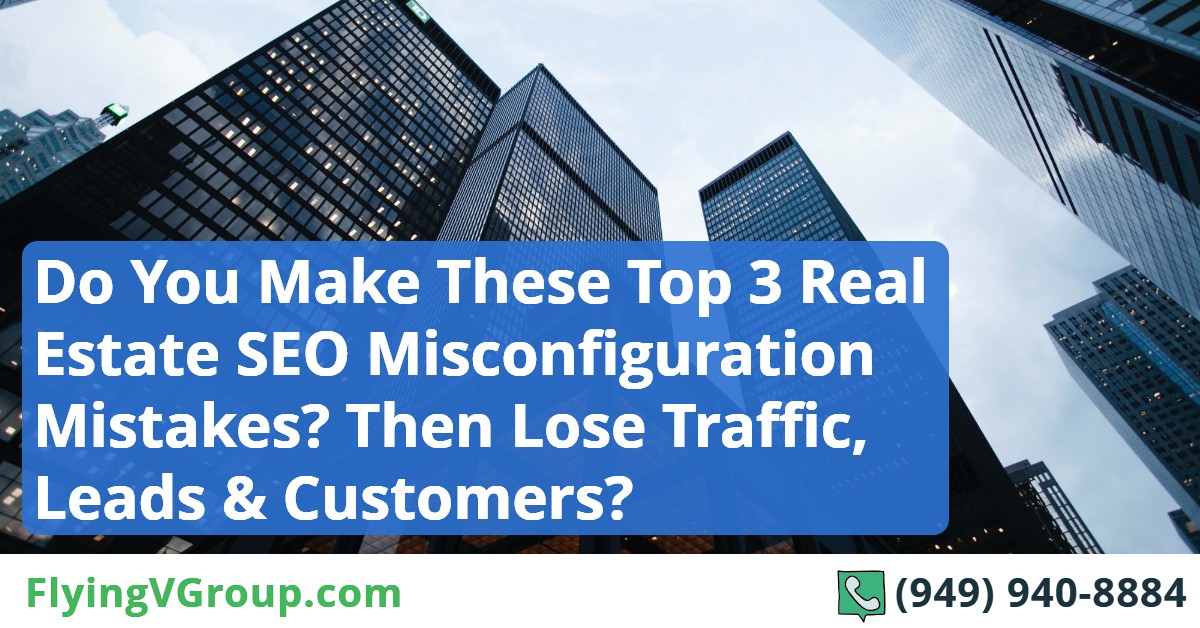Think about it: today’s website visitors are tomorrow’s customers. They put money in your pocket and help to sustain your business for months and years to come.
Search engine optimization makes all this possible. Can you afford to jeopardize your website due to these silent SEO misconfigurations?
Make friends with Google. I consider it to be your best partner in generating FREE organic traffic because it helps you to connect with your target audience, without having to pay for ads or clicks. That’s the power of search optimization, and the reason why it is critical for you to fix the 3 SEO misconfiguration issues I’ll be sharing in this article.
Imagine this. You control most, if not all of the on page SEO factors such as your page titles, descriptions, images, page loading speed, as well as how it looks on a mobile and desktop.
You might be surprised to know that even SEO specialists struggle with these issues. It is imperative that you fix these SEO misconfigurations by any means possible to ensure the survival and success of your brand.
Here is the first essential factor that I suggest you have a look at because it usually takes the least amount of time and (technical) ability to solve it.
1) The TITLE tag and Meta DESCRIPTION of your web page
Your title tag determines (with a few exceptions) your display title in search engine results (SERPs). This is a search visitor’s first experience before deciding to click on your page.
You have just two seconds to grab the interest of your target audience before they click on the pages and search results of your competitors.
I cannot stress this enough – even if your site ranks #1, an average title can deter someone from clicking on your link. The fewer clicks your ranked pages get, the lower Google may rank them.
How do you fix the title & meta description?
That’s easy. Use your favorite SEO plugin. If you’re using WordPress, then All in One or Yoast SEO are the best choices. (We use the premium version of Yoast for our site and client sites.)
If you’re using a different platform, then you may want to instruct your webmaster or team to handle this aspect. It’s very simple to do, although it is a bit time consuming if you have hundreds of pages, blog post titles, and descriptions to rewrite.
However, once done, this little “tweak” can boost your search engine page click results significantly, and may even increase your rankings. Just try it, you’ll be pleasantly surprised.
Tip: your page title should be between 50 and 60 characters to appear on Google, while your page meta description should not exceed 160 characters. Avoid exact match keyword stuffing at all costs!
Do some detective work on Google. Type in your target audience’s favorite keywords (with buying intent, of course) and…
Get a live listing of top page results, and see how other real estate companies and agents (your fiercest competitors) display their web page titles & descriptions.
Your goal is to ensure that you craft better versions to out-smart and out-rank them, without sounding too generic or hyped-up.
Your web page titles (and descriptions) have to be ultra-specific, and highly compelling to grab the attention of your target prospects and prompt them to click… include numbers, where applicable.
Example:
There are at least 6 common pages on a real estate website:
- Home Page.
- About Us Page.
- Blog Posts Pages.
- Lead Capture Pages
- Property Listings Pages.
- Community Pages.
- Buying/Selling Guide Pages.
2) Web Page Loading Speed
You can find the link to the above infographic here.
Regardless of whether they are involved in the real estate industry or not, many website owners are completely unaware of this particular aspect and, therefore, completely ignorant.
If they realize that their web page loading speed is a key factor in getting better Google rankings, more visitors & higher on-page retention rates, they’d give it considerably more attention.
If your website pages take long to load, then search bots may stop crawling them, and visitors will definitely not come back, or exit faster than the blink of an eye.
How do you fix this?
Go to Google Page Speed Insights and check your website page speed. It’s a free web service that helps to accelerate your web pages across devices.
Act according to their suggestions, and you should be fine. Make sure your website loading time is under 3 seconds. This will satisfy not only your visitors but Google and other search engines as well.
Let’s examine https://www.zillow.com for example. We took a look at their home page first, after which we analyzed their blog, and then we entered a page on their blog for speed testing.
You’ll notice that each page has different speed results and metrics, therefore, requiring unique optimization fixes.
Both mobile and desktop versions have been tested. You’ll notice that the desktop version of these pages are loading much faster.
Warning: this shows that they’re losing valuable traffic from mobile users, and will continue to do so if they don’t fix these mobile SEO misconfiguration issues.
It is absolutely crucial that your website contains mobile-friendly and responsive web pages that work in sync, and load fast across all browsers and all devices. Therefore, the next misconfiguration, once fixed, will help you further enhance your web page speed, where applicable.
Another option to help with page loading speed is a fast web hosting provider. Sometimes, all optimization may be done from your end, but you are using a slow host. If you are on WordPress, we recommend Kinsta. Kinsta is the best managed WordPress hosting provider and will ensure that your site is loading lightning fast!
3) Image Optimization
Image optimization for both desktop and mobile is a traffic-boosting SEO method and a very important page ranking factor.
The way to fix these issues is to analyze these common, yet often overlooked aspects:
1.Missing alt text in images.
Alt text (alternative text) is used to add meaning to on-page images when they cannot be viewed by your website visitors (due to image loading issues or other browser factors beyond your control).
Using alt text in your images can provide a better user experience, but it may also help earn SEO ‘points.’ Along with implementing the image title and file naming best practices, including alt text may also contribute to image SEO.
Just like exceptional titles sell more books, your aim of your alt text should be to ‘sell’ your images. Consequently, having a compelling image description is highly recommended and required with this practice.
Quick fix: add and edit the ‘alt text’ attribute of all your images by using your favorite SEO plugin, SEO audit tool, or Screamingfrog.
You may find these articles useful:
Image Compression Techniques That Will Help You Rank Higher
2. Find broken images
Update all broken images using this WP tool or this one (which also checks for broken links – another vital misconfiguration issue that I recommend you look into, and fix ASAP)
Must read:
Broken Link Building: What You Need to Know to Get Links
A Step by Step Guide to Modern Broken Link Building
3. Resize your images to increase page speed and load time.
Here we’ll look at two ways to adequately fix image issues:
Image size and file size.
Choose the right compression tool and rate because if you compress an image too much, the file size is reduced but the image quality is poor.
You can use tools such as Gimp or Trimage, or WP plugins like Yoast SEO, WP Smush, and TinyPNG.
Joshua Hardwick ran a little experiment for AHREFS, and this is what he found:
- Imageoptim: 69% (JPEG). 40% (PNG)
- Shortpixel: 42% (JPEG). 59% (PNG)
- Kraken.io: 13% (JPEG). 63% (PNG).
- TinyPNG: 27% (JPEG). 65% (PNG).
- Optimizilla: 27% (JPEG). 60% (PNG)
- Imagify.io: 6% (JPEG). 1% (PNG)
- Compressor.io: 42% (JPEG). 58% (PNG)
Bonus Tips: here are 3 other SEO mistakes to avoid (and vital SEO misconfiguration issues to fix)
Internal Linking Structure
Internal links are to backlinks what Robin is to Batman. They’re crucial to SEO success, yet receive little or no credit.
How often do you link back from your articles and blog posts to other pages on your website? Do you always double check to ensure that all these interlinks are working properly?
How often do you use the same anchor link in hopes of ranking higher in the top search engine page listings, or simply because you don’t know about better anchor text versions to use?
These two SEO processes refer to what SEO specialists call ‘internal linking’ and “anchor text optimization.” Having the right linking structure, and using the right anchor linking strategy could have a significant effect on your website’s crawlability and rankings.
If you want to please both your website visitors and the search engines, then your website requires a clean structure, featuring only the essential pages and sections at the top, with the rest at the bottom or in the sidebars (if any).
Moreover, linking back to other relevant pages on your website often helps reduce the bounce rate and increase visitor engagement time, which is a sign of a healthy website.
Plus, from an SEO standpoint, it helps strengthen the ranking scores of other pages (e.g., it gives them extra ‘link juice’ or link equity power)
How do you fix these issues and ensure that your website is SEO-stable and all web pages and links are error-free?
First of all, avoid using the same anchor text when linking to your other pages.
But that’s not all! You should also link to your website homepage less often because that’s probably not where you want to drive the most clicks and organic traffic.
Google is smart enough to easily spot anchor text overuse & keyword stuffing, and can penalize your webpage from ranking higher. This will decrease your rankings and traffic numbers sooner rather than later.
Therefore, this is a risky move and you’ll want to be extremely careful with this approach.
Secondly, test your navigational menu and top featured pages. Double check each page, and click on your in-content, editorial-type hyperlinks. They can be found in your blog articles, listing pages, and also on other relevant web pages on your site.
If you have hundreds of pages, it will not make sense to run a manual search. However, you can use some of the best SEO audit tools (https://www.flyingvgroup.com/2019/11/08/semrush-ahrefs-mozpro-real-estate-seo-tools-review) to help automate the task, and save yourself a ton of time in the process.
This SEMrush in depth article covers the most common, yet often overlooked internal linking issues that you need to be aware of, and double check using one of the tools above:
- Page crawl depth of more than 3 clicks
- Pages with only one incoming internal link
- Redirect chains and loops
- Too many on page links
- Temporary redirects
- Permanent redirects
- No follow attributes
- Orphaned sitemap pages
Make use of the HTTPS Protocol
Most real estate website owners and bloggers ask themselves…
Does It Matter If I Have HTTPS or HTTP On My Website?
Here’s the short answer: Google prefers HTTPS protocol, since their public 2014 announcement. Google wants to ensure the safety of web users and may provide a small ranking boost for your webpages if you use this SEO configuration.
How to fix it?
Nowadays, every top hosting provider offers a free SSL certificate with their standard hosting plan. If you’re unsure, ask your current web host firm about this. It’s very easy to add this function to your website. It’s a matter of a few mouse clicks, and you’re all set and ready to go.
If your website is already serving on HTTPS, you can test its security level and configuration with the Qualys Lab tool.
Web Page Contact Forms
These are traditional forms, and setting them up correctly is fundamental in responding to all prospect inquiries in a timely manner, and securing more leads and customers.
It happened not once, but several times that I wanted to contact a webmaster or website owner, and their contact form was broken or not working properly. This is very frustrating for a prospect looking to connect with or buy from you.
There are two common mistakes that are prevalent in contact forms. First, missing relevant fields; for example, if you require your prospect’s phone number, then ensure that the ‘phone number’ field actually appears in the contact form.
The second issue occurs when the form or plugin is not functioning correctly on your website or web page. This happens because the WP plugin may be outdated, or set up incorrectly. Another possible issue may relate to the fact that your email integration with the form was incorrectly set up from the beginning and,therefore, you’re not receiving any incoming emails from that particular web form/page.
How do you fix this?
Double check the form in your ‘contact us’ page, as well as on any other page where you require the contact information of your visitors, including all your lead generating pages.
Also, ensure that your contact page is as prominently displayed as possible because you want more prospects to connect with you on your real estate website. Mentioning this contact page URL in other pages or blog posts on your website is also essential in boosting your prospect to lead conversions.
You can reveal all these SEO misconfigurations by doing a simple SEO audit of your real estate website, and by using any of the 3 SEO tools we have reviewed in this article [link-back].
Remember, most websites lose 45-85% of profit because of SEO misconfiguration. So, it is absolutely critical for you to fix these issues before your rankings, website, and business suffer the consequences.
Thank you so much for reading Do You Make These Top 3 SEO Misconfiguration Mistakes, Causing Your Real Estate Website to Lose Traffic, Leads & Customers?. We really appreciate it! If you have any questions about our article, or can suggest any other topics you think we should explore, feel free to let us know.
Be sure to sign-up for our newsletter to receive monthly emails on all of the latest trends and happenings in the digital marketing space. You will also receive our FREE E-Book with the Amazing Marketing Tools for Powerful Business Growth. Sign-up below!
Also, if you received some value out of this article, please share with your friends or colleagues, or leave a comment/question below. We really appreciate you reading our blog and every share/comment means the world to us and allows us to continue producing valuable tools to help you grow your business!






0 Comments